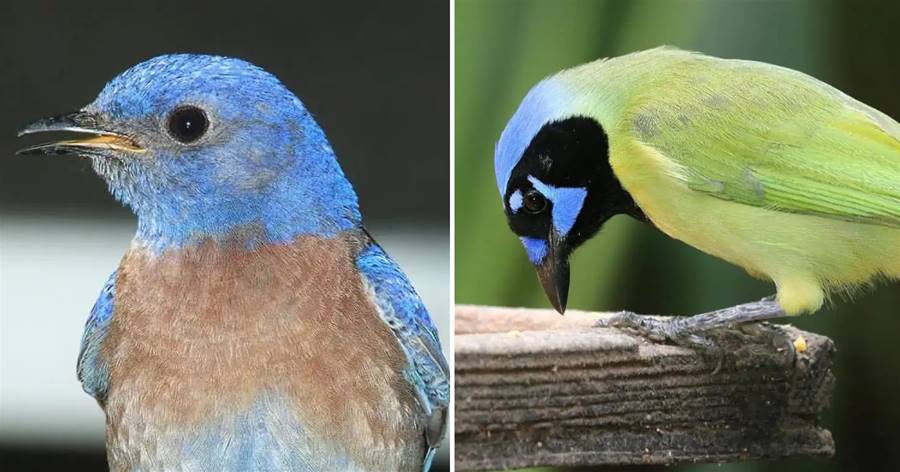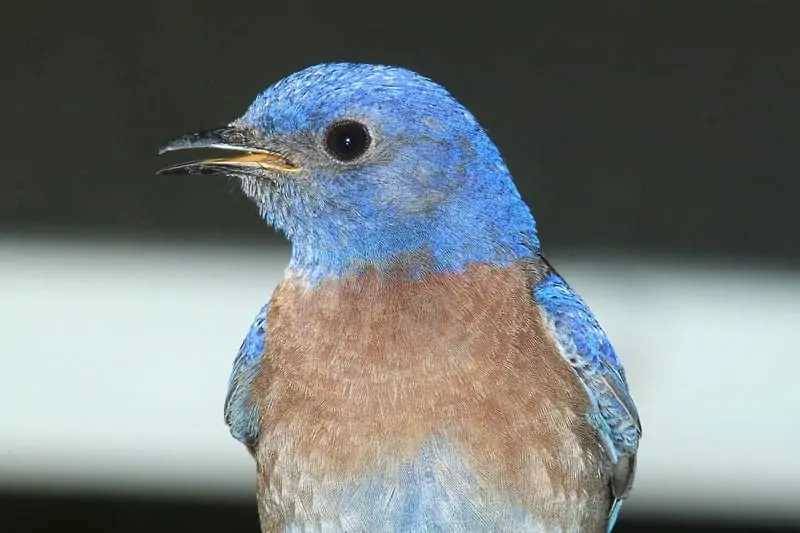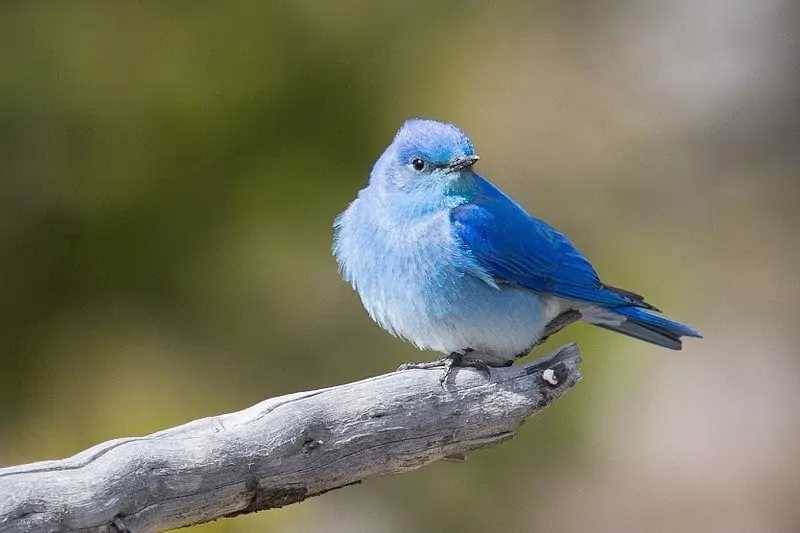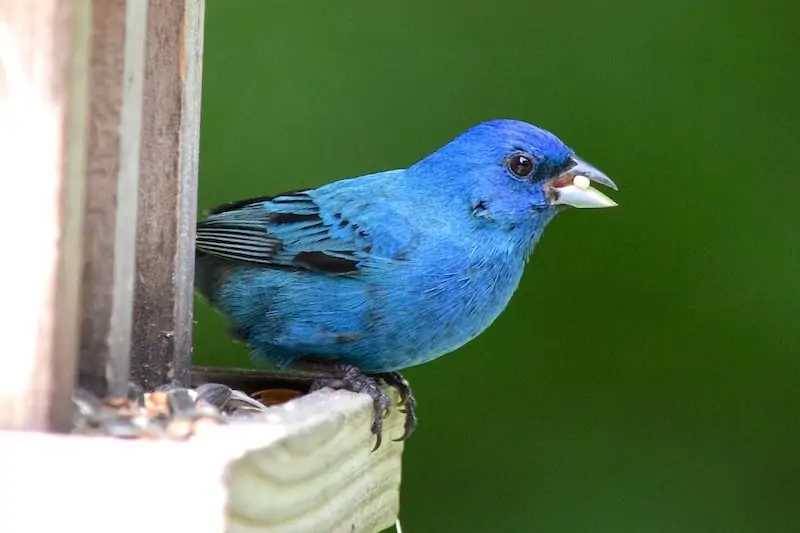

In this article I compiled a list of some of the most colorful birds in north America. There are so many different colorful birds in the United States alone, that I found this article getting bigger and bigger until finally I realized I had to stop somewhere. So while I may not have colorful bird listed here, I have quite an extensive list. Feel free to suggest any you think belong on this list in the comments.
Some of the birds are common and recognizable, others aren’t. Not all will eat at feeders and not all are birds that you will regularly see in your backyards, but when you do they really stand out in a crowd.

I’ll start this list off with the bird that a lot of us think of when we think of colorful birds, the Northern Cardinal…
One of the most eye-catching birds in North America is the Northern Cardinal, particularly the male. The male cardinal is the one bird that starts people off with bird watching more than any other bird, according to the Cornell University Lab of Ornithology.
Bluebirds
As their name suggests, are very colorful blue birds! There are 3 species of bluebirds in North America. Eastern and western bluebirds have a very similar blue and orange coloring, while their mountain dwelling relative is entirely blue.
The Eastern Bluebird’s territory covers a larger range than the western. Easterns can be found throughout the eastern and central states. Bluebird’s striking blue colors really make it a backyard favorite.

Westerns Bluebirds are only in the states along the west coast and that border Mexico. Eastern and Western bluebirds appear very similar with bright blue heads and backs and rosy-orange on their breast. Western bluebirds have more of a blue chin.

The mountain bluebird can be found in the western half of the U.S. up into Canada and down into upper Mexico. They like high, open mountain country in the summer, and plains and prairies in the winter. The males are a bright turquoise and sky blue with a white belly, and lack the rosy orange of the eastern and western bluebirds.
While more common in Mexico and Central America, the Vermillion Flycatcher can be found in the southern parts of the country such as Florida, Louisiana, Southern Nevada and Texas.

The Varied Thrush is found in the Pacific coast states. As with most birds, the male (shown here) has the bright and flamboyant colors. They are known for being aggressive and territorial birds. These beautiful birds may eat bird seed from the ground but also feed on insects.
The Cedar Waxwing is a very unique looking bird and can be easily identified by the black mask that wraps around its head, covering its eyes. Their diet consists of mainly fruit and berries but they do feed on insects as well. If you want to attract them to your yard you can plant fruit bearing trees and berry bushes. They are known for having waxy red secretions on the tips of their wings, hence the name waxwing.
One of my personal favorite birds to spot, is found all over the U.
Jays
Many of us may think of the when we talk about jays, but there are actually 10 species of jays found in North America. Jays are known for being colorful, noisy, and somewhat territorial.
Along with the Northern Cardinal, the Blue Jay is one of the most common colorful backyard birds in North America. Their diet consists of seeds, nuts, berries, and insects although they have been known to . They are also known to vocally mimic hawks and birds of prey, whether this is to alert other jays of danger or to scare away other birds is unclear. They are commonly seen at feeders and .
Found mainly in the mountainous regions of the western parts of the country and on into Canada, the Steller’s Jay is very similar to the Blue Jay.
Only found in the southernmost tip of Texas but mainly in Mexico, Central, and South America, the Green Jay has gorgeous colors and because of that I didn’t want to leave them off the list. They are omnivores and feed on seeds, fruit, insects, and small vertebrates.
Orioles
There are 9 species of orioles in North America, most of which have yellow/orange plumage, and 5 that are pretty common. Aside from their bright colors, orioles are known for their love of fruits and sweet things. They relish sliced oranges, jelly, and have even been known to visit hummingbird feeders when food is scarce. For this article I am just listing a few of my favorites as we’ve already got a lot of birds to see!
Found mostly in eastern North America, the Baltimore Oriole got its name from Lord Baltimore of England, who was the first proprietor of Maryland, because its colors closely resembled his coat of arms.
With a range throughout most of the western half of the U.S., Bullock’s Orioles have a similar diet to other orioles. They love sweet things and will feast on fruit, but also eat insects and mealworms. A mixture of jelly and water presented in a dish or oriole feeder may attract them to your yard.
Also known as the palm-leaf oriole because of their tendency to build their nests in palm trees, the Hooded Oriole is found in the southwestern parts of the country such as California, Nevada, and Arizona. They have the same love of sweets as other orioles and are known for being inconspicuous birds, but their bright colors may give them away if you look hard enough.
The Scott’s Oriole sticks to the arid desert regions of the southwest states. This oriole has a dependency on the yucca plant for many things.
Swallows
There are 7 types of swallows that are native to North America, the most common of these is probably the Barn Swallow which I have listed below. Swallows are eat primarily insects so they will not visit feeders, some people have had success with mealworms. They are cavity nesters so you may see them in your yard in old woodpecker holes or even birdhouses.

These small swallows are know for their aerial acrobatic skills when they are catching insects in mid flight. As their name implies they have green and violet colors with white underbodies. Their range is all throughout the western half of North America including western Canada and into Alaska. They like living near rivers, streams, ponds, or lakes so they can hunt for bugs near the water.

The Barn Swallow is known for building its nests in barns, sheds, carports, under bridges, and other man-made structures.

Another swallow with a very wide range, the Tree Swallow can be found throughout all of North America at different times of the year. They feed on insects, fruits, and berries and will use nest boxes if you want to attract them to your yard.
Tanagers
There are 5 species of tanagers found in North America; scarlet, summer, western, flame-colored, and hepatic. I have included scarlet, summer, and Western Tanagers on this list. Male tanagers have the bright red, orange, or yellow colors with the females being more of a duller greens and yellows.
The male Scarlet Tanagers have the bright red plumage you can see here with black tails and wings. The females are more of a green and yellow color but still with dark wings.
The Western Tanager has an orange and red head with a yellow body and as you may have guessed has a range throughout pretty much all of western North America. They do not usually visit bird feeders and don’t normally eat seeds, but may visit your backyard if you have fruit bearing trees or bushes. A birdbath or maybe a small garden pond with moving water may also attract a Western Tanager.
Mainly found in the southeastern region of the United States and some of the southwestern states. They feed mainly on insects such as bees and wasps, but may also eat berries and fruit in your yard similar to other tanagers. The males are a brilliant bright red and the females are more of a yellowish color. They can often be spotted hanging out in the treetops of open woodlands throughout their range. If you put out orange slices they may be tempted to visit your feeders.
Grosbeaks
There are 5 common species of grosbeaks in North America; Pine Grosbeak, Evening Grosbeak, Rose-Breasted Grosbeak, Blue Grosbeak, and the Black-Headed Grosbeak.
Common to most of the eastern half of the U.S., the male Rose-Breasted Grosbeak has a rose-red patch on his chest and is very easy to identify if you see one. They can commonly be seen at bird feeders eating sunflower seeds, peanuts, and safflower seeds. Both the male and female build the nests together and will also take turns incubating their up to about 5 eggs.
The Evening Grosbeak has a declining range throughout most of North America, however they are only common in northern parts of the US and into Canada. Male Evening Grosbeaks are yellow, white and black with a yellow patch just above or over the eyes and white on the wings. They aren’t commonly seen at feeders but do eat bird seed and since they travel in flocks may visit them in numbers occasionally.
The Blue Grosbeaks breeds throughout much of the southern U.S. and are expanding their range north. Genetic evidence suggests that the Lazuli Bunting, also on this list, is the closest relative to the Blue Grosbeak.
The Pine Grosbeak is only found in a few random pockets in the northwest part of the lower 48 states but on into Canada and even Alaska they are much more widespread. The males plumage is a vibrant rosy red and pink color that is quite unique. If you live in one of the areas were they are found, they will relish at feeders.
Buntings
There are 9 species of buntings that are native to the United States. An additional 7 Asian species have been occasionally spotted in the U.
The Painting Bunting can be found in Florida, Texas and a few other southern states at different times of the year. In my opinion this one is one of the most colorful birds on this list with the blue, green, yellow, and red feathers. Because of their flamboyant colors they are often captured and sold illegally as pets in Mexico and other places. Painted buntings do eat seed and may visit feeders if you live within their range.

The Indigo Bunting has a breeding range throughout all of the middle and eastern U.S. You can try attracting them to feeders around mid-summer with thistle, nyjer, or even mealworms. These birds migrate in large flocks by night and supposedly navigate by the stars. The Indigo Bunting sometimes interbreeds with the Lazuli Bunting in places where their ranges overlap.
The Lazuli Bunting is found throughout most of the western U.S. where the males are recognized by their brilliant blue plumage.
Warblers
There are of warblers found in North America broken up into two families, old world and new world warblers. Warblers are small song birds and most of them are very colorful. Rather than adding every single one I picked out a few of my favorites.
The Northern Parula is a new world warbler found in the eastern half of the country. They do not visit bird feeders as they feed primarily on insects, but will eat fruits and berries occasionally.
The American Redstart is widespread from Canada south into Central and South America, they are however absent in some of the western states in the U.S. While the males are mostly black, they have some brilliant flashes of yellow and orange making them really stand out. They eat mainly insects but in late summer are known to feed on berries and fruit.
The Yellow Warbler is a very small bird that has a big range and is common throughout all of North and Central America. The male is bright yellow with dark streaks on his body and the females actually don’t look much different. Like other warblers they feed almost exclusively on insects and prefer living and nesting in thickets and small trees. They build their nests at least 10 feet off the ground, sometimes much higher.

The sky blue male and the green blue female Cerulean Warblers have a small range in eastern U.S. They mainly breed in the northeastern states and migrate into southern states and into Central America. These warblers are also small insectivorous songbirds that like to hang out in the treetops of mature forests. The Cerulean Warbler is considered uncommon with a declining population.
The Prairie Warbler can be found throughout much of eastern U.S. and into the Caribbean islands. These little guys are easy to distinguish from other yellow colored warblers by their prominent black streaks around the eyes and down their sides.
With his bright yellow plumage, the Prothonotary Warbler is one of the only warblers that might use a nest box if you provide one. This gives you a chance to attract a mating pair to your yard. Naturally they like nesting in standing dead trees in wetlands and swampy wooded areas, because of this they are often referred to as the swamp warbler.
Woodpeckers
Including sapsuckers and flickers, there are at least 20 different species of woodpeckers in North America, here’s an article we did with
Not commonly seen at feeders, the Yellow-Bellied Sapsucker eats sap from trees as its main food source. They also eat insects and spiders from the trees as they are drilling for sap. The male has a red crown and throat as well as the famous yellow belly. Their range includes most of the central and eastern parts of the U.S. as well as much of Canada.
The Northern Flicker isn’t as brightly colored as some of the other birds. They do have some very unique markings though, and in this birders opinion are one of the most colorful birds in North America. Their larger size, spotted breast, banded back and multi colored head make them very recognizable. They do have a pop of color that is hidden on the underside of their wings and tail, usually only visible when flying. They have a very wide range are found in all of North America. In the eastern half of the U.S. the flickers have a yellow underwing, while in the western half they have a red underwing.
This fella can sometimes be seen at suet feeders, especially in the winter time. They spend their winters in most of the eastern states and migrate into the more north central states for breeding. They are also not extremely colorful but the flame red head of the male really makes them stand out and a treat to spot. Especially since the population is declining and they aren’t seen as often as they once were.
Hummingbirds
There may be as many as 23 different species of hummingbirds in North America.
The Ruby-Throated Hummingbird is very common throughout the eastern and central parts of North America. They are the first ones I expect to see at my feeders and the ruby red throats of the males make them very colorful indeed. Use our easy to fill up your hummingbird feeder and they will show up if you are in their range.
Costa’s can only be found in pockets in the southwest states of the U.S., Baja California, and coastal areas of west Mexico. The male has a beautiful purple throat area that makes them very pretty if you can spot one. They will also eat hummingbird nectar from a feeder or can be attracted to your yard with certain nectar producing flowers like honeysuckle.

Found only in the Pacific west, in some of the same areas as the Costa’s Hummingbird, Anna’s Hummingbird are the Ruby-Throated of the west and are quite common there. They are also commonly seen at feeders when nectar is offered and the males can be spotted by their pinkish red throats and heads. The males are known to perform aerial acrobatics to impress the females during mating season.